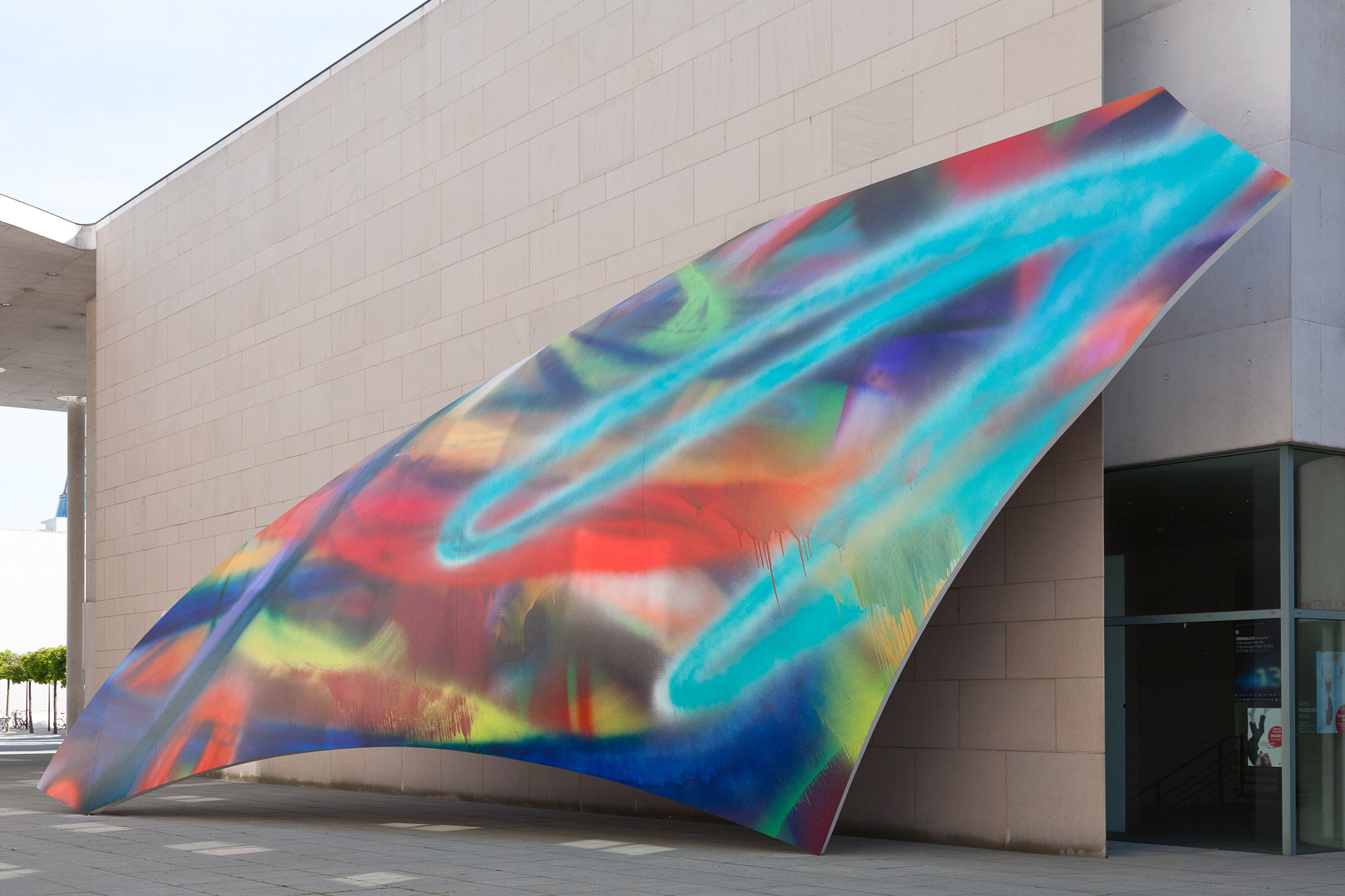
Katharina Grosse, In seven days time (Außenskulptur), 2011, Kunstmuseum Bonn, © VG Bild-Kunst, Bonn 2021, photo: Guido Oberhäuser
Art in the Outside Area
The collection of the Kunstmuseum is situated not only inside, but also outside the museum. This serves to emphasize the concept of museum architecture, designed by Axel Schultes, which simultaneously shelters art and provides it with an open stage. Several works located outside connect the urban space with the architecture of the museum. They lean against the wall (Katharina Grosse), are inserted into it (Mischa Kuball) or are set up in the open area in front of the museum (Heinz-Günther Prager).
With IN SEVEN DAYS TIME (2011), a seven-meters-high and twenty-meters-long, concave form made of Fiberglass and shaped like a shard, Katharina Grosse created an evocative emblem for the museum. Like a wafted leaf now leaning against a wall in vivid presence, IN SEVEN DAYS TIME has settled down in front of the museum. The artist developed an independent sculptural form for the radiant, free movements of color, thereby extending the medium of painting into the external space.
The sculpture Gäa by Heinz-Günther Prager likewise enters into dialogue with the architecture. The work done in forged and fired steel defines the site between street and museum entrance and offers viewers an orientation within the space. Its elementary circular form, apparent heaviness and restrained inherent color issues an invitation to a bodily experience of concentration and contemplation.
Inserted into the window sections of the northern and western facade of the museum, Public Eye I and Public Eye II (1997/2001) by Mischa Kuball gaze like eyes onto the surroundings of the museum. At the same time, they are prismatically distorted images of a trip through the city, seen through a water glass.





